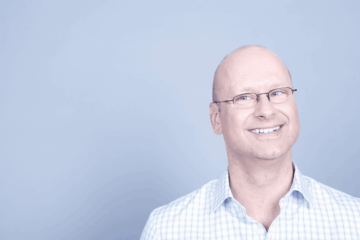From consulting hours to SaaS revenue – how to productize your expertise with a framework that transformed my career.
From Consultant to Creator
For years, I was perfectly happy as an SAP consultant. I was good at what I did, billed top rates, traveled the world, and worked with some of the biggest companies on the planet helping them implement and configure SAP software.
But once I got married, the constant travel started to wear thin. That’s when my good friend – and fellow SAP expert – Kent Bettisworth told me about a company in Europe that had just started offering online SAP training. This was around 2006, and back then, even SAP itself didn’t offer online training. The idea was unheard of.
Naturally, I had to check it out. What I found wasn’t impressive – the execution was clunky, the content uninspiring. But the spark was undeniable. The idea was right. They just weren’t doing it well. And that’s when it hit me: I could do this better.
So I dove into a world I knew nothing about: online education and authoring tools. I experimented with formats, failed repeatedly, and eventually landed on a model I liked. To my surprise – and relief – people responded well. I built one course. Then another. Then another.
At first, it was just me, in between consulting gigs. But I wanted to test the idea that I could create a revenue stream not tied to my time. By the time I’d created 20 courses, the writing was on the wall: it worked. The business had legs.
From there, I hired SAP experts to draft scripts, instructional designers to build lessons, and voice-over talent to record audio. What started as a side project grew into the world’s largest independent SAP training platform – until SAP itself finally entered the market, knocking us down to #2.
What began as a personal experiment had turned into a scalable company.
Step 1: Start Small and Validate
Looking back, the smartest thing I did was start small. One course. That’s it.
I didn’t spend months writing a business plan. I didn’t raise money. I didn’t build a giant website with dozens of features. I just created a single course and put it out into the world to see if anyone cared.
They did. And that’s when I made another. Then another. Each course was a test. Each one taught me something about what worked, what didn’t, and what people were actually willing to pay for.
The beauty of starting small is that the risk is minimal. If nobody had bought my courses, I’d have wasted some nights and weekends – nothing more. But because I tested early, I discovered a viable business model while keeping my downside limited.
It’s easy for entrepreneurs to get paralyzed, waiting for the “perfect” idea or obsessing over a 40-page business plan. My advice: don’t. Launch early, fail fast, iterate often. That’s how you validate.
Step 2: Build Systems, Not Dependencies
After the first 20 courses, I hit a wall. There was no way I could keep creating everything myself while also running consulting projects. If the business depended on me, it wasn’t scalable – and certainly not sellable.
So I started building systems. I brought in SAP experts to write lesson scripts. Instructional designers to build the actual courses. Voice actors to record audio. Later, a customer service team to handle support tickets. Every piece of the puzzle that once lived in my head was broken down into a repeatable process that someone else could execute.
That shift – from dependency to systems – is what turned my side hustle into a company. Without it, I’d have been stuck in the freelancer trap, just with a fancier product. With it, I had a machine that could scale far beyond me.
This is the difference between running a business and owning a job. If your business stops when you do, you don’t really have a company. You have a dependency.
Step 3: Evolve the Model
At first, the business was simple: I sold individual courses to SAP professionals. It worked – but it was still small scale.
Then I started thinking bigger. What if I could sell bundles of courses to entire companies? That’s when I built a B2B sales team and hired account managers. The shift paid off. We sold a lot of corporate training packages, and revenues climbed fast.
But the real breakthrough – the move that put the company into overdrive – was switching to a SaaS subscription model. Instead of one-off course sales, everything became a recurring contract. Customers signed up once, and their access renewed automatically until they canceled.
That single decision doubled the value of the business. It gave us predictable revenue, steadier cash flow, and a multiple that investors couldn’t ignore. SaaS wasn’t just a new model – it was the turning point that made the business scalable and highly attractive for acquisition.
Step 4: Prepare for Exit
Growth is exciting. But if you ever want to sell, growth alone isn’t enough. Buyers don’t just look at your revenue; they look at how your business runs without you.
That’s where preparation made all the difference. I spent over a year making the company “exit-ready.” Every agreement, every contract, every financial statement was organized and accessible. Processes were documented, teams were trained, and I deliberately made myself less important.
By the time we went to market, the company didn’t need me anymore. And that’s exactly what buyers want to see. They’re not buying your personality or your hustle; they’re buying a machine that will keep running long after you’re gone.
Because we had recurring revenue, clean financials, and a business that ran on systems – not me – we attracted serious buyers quickly. And when the right deal came along, we were ready.
Preparation wasn’t glamorous. It was tedious, detail-heavy, and sometimes felt like a second job. But it paid off in multiples when it came time to exit.
The Playbook for Productizing Expertise
Looking back, the path from consultant to SaaS founder to exit wasn’t magic. It was a series of very deliberate steps:
- Start small and validate. Don’t wait for perfect. Ship something, see if people care, and learn by doing.
- Build systems, not dependencies. If the business relies on you, it’s not a business. Process everything.
- Evolve the model. One-off sales might pay the bills, but recurring revenue builds enterprise value.
- Prepare for exit. Get your house in order early. Clean financials, documented processes, and a business that runs without you make all the difference.
That’s the framework. It works whether you’re selling training courses, SaaS, or any other form of productized expertise.
The biggest trap experts fall into is clinging to the billable hour. The biggest opportunity is turning what you know into something that scales without you.
I did it in SAP training. You can do it in your industry.




[…] years, my entire operating system was goal-driven. I thought in milestones, numbers, and […]